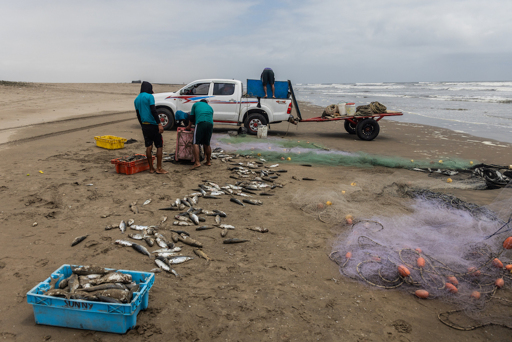“Your waters start here and go to over there!” a man says in an aggressive tone, his face hidden behind a black balaclava, standing at the water’s edge near a guard post of Illescas National Reserve, located in the department of Piura, about 800 kilometers (500 miles) north of Lima. Near the shore, there is a somewhat battered pickup truck and next to it, a small wooden boat known as a zapatito (little shoe), where there is also a net lying on the sand, in which a few flathead grey mullets (Mugil cephalus) are still flapping their fins. The net is a chinchorro, which has been banned along the entire Peruvian coast since 2009 under a resolution from the Ministry of Production. Around 2 p.m., under a hesitant sun, the atmosphere grows increasingly tense as the fishers shout. One claims that “the beaches belong to God,” while another admits he knows this type of fishing “is prohibited” but says he has a family to feed. Staff from the National Service of Protected Natural Areas of Peru (SERNANP) approach to persuade them, warning that they are breaking the law and must haul in their fishing gear and leave. A truck accompanying the fishers, carrying several other people, has just fled the scene. Those still pulling in the nets eventually climb into the pickup truck towing the zapatito and leave the beach as well. On the shore, they toss several small fish they considered worthless, which the sun quickly scorches. “This is…This article was originally published on Mongabay
From Conservation news via this RSS feed


